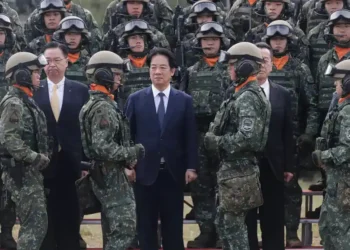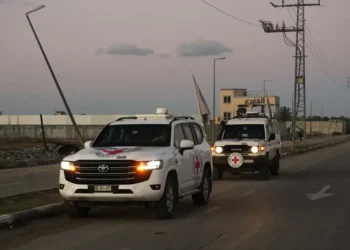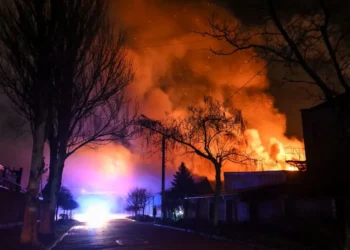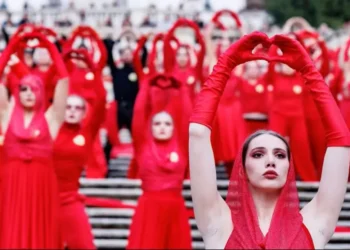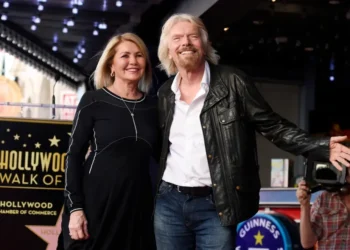Russia and Ukraine Conduct Major Prisoner Exchange in Ongoing War Efforts
In a significant development in the ongoing war, Russia and Ukraine announced on Wednesday that they had exchanged 175 prisoners each. This marks one of the largest prisoner swaps since Russia’s full-scale invasion of Ukraine began three years ago.
Ukraine Welcomes Returning Soldiers
Ukrainian President Volodymyr Zelenskyy confirmed the exchange, stating that the returning individuals included soldiers, sergeants, and officers from various branches of the military, including the Armed Forces, the Navy, the National Guard, the Territorial Defense Forces, and the Border Guard Service.
“This is a crucial step towards peace,” Zelenskyy emphasized. He has long advocated for an “all-for-all” prisoner swap, hoping such efforts can build trust between the two nations amid ongoing discussions about a potential temporary ceasefire.
Emotional Reunions in Ukraine
The release of Ukrainian prisoners was met with overwhelming emotion at a hospital in the Chernihiv region, where families eagerly awaited their loved ones.
Among them was Aliona Skuibida, 28, who had campaigned tirelessly for the return of her fiancé, Andrii Orel. He had been captured in April 2022 during the battle for Mariupol, a key stronghold that eventually fell to Russian forces.
“We were supposed to get married when he returned from the battlefield, but instead, he was taken prisoner,” Skuibida said.
Despite the trauma, she was ready to celebrate Orel’s return, bringing blue and yellow balloons and a cake in honor of his birthday, which had passed just the day before.
When the buses carrying the freed prisoners arrived, emotions ran high. The released soldiers, many visibly exhausted and frail, stepped out, some smiling despite missing teeth.
“Until I saw our flag, I couldn’t believe I was home,” said 46-year-old Oleksandr Savov. His daughter, Anastasiia Savova, 25, had sent letters to him for nearly three years without receiving a response. Now reunited, the father and daughter embraced tightly.
“All I want now is peace, a bowl of borshch, a hot shower, and a clean bed,” Savov said, describing the dire conditions he endured in captivity—cold, damp cells, poor nutrition, and lack of medical care. He showed reporters his hands, covered in a red rash, as evidence of the hardships he faced.
However, even as families celebrated, many others continued searching for missing loved ones. Some walked through the crowd, holding up photographs and asking recently freed prisoners if they had seen their relatives in Russian captivity.
Russia’s “Goodwill Gesture” and Political Implications
The Russian Defense Ministry announced the release of an additional 22 severely wounded Ukrainian captives as a “goodwill gesture.” This development came shortly after Russian President Vladimir Putin spoke with former U.S. President Donald Trump about the possibility of a partial ceasefire. Initially, Russia had promised to release 23 prisoners, but there was no official explanation for the revised number.
According to Zelenskyy, the exchange included Ukrainian fighters who had been captured and subjected to fabricated charges by Russian authorities.
“Ukraine remembers each of its heroes, and we will bring everyone home,” he vowed.
The Complex Process of Prisoner Exchanges
Petro Yatsenko, head of Ukraine’s Coordination Headquarters for the Treatment of POWs, stressed that these exchanges require extensive planning and negotiation.
“These are not spontaneous events,” he said. “It takes months of careful coordination—not just days or weeks.”
Ukraine’s last prisoner swap took place on February 5, and the government had been working tirelessly since then to secure this latest release.
Since the beginning of Russia’s invasion, over 4,000 Ukrainian captives, including civilians and foreign nationals, have been freed. The released servicemen in this latest exchange had been captured while defending key regions such as Mariupol, the Azovstal steel plant, Donetsk, Luhansk, Kherson, Kharkiv, Mykolaiv, Zaporizhzhia, Sumy, and Kursk.
Zelenskyy assured that all returning soldiers would receive immediate medical and psychological care. He also expressed gratitude to Ukraine’s international partners, particularly the United Arab Emirates, for facilitating the exchange.
Ongoing Concerns About Treatment of POWs
Reports from the United Nations indicate that most Ukrainian prisoners of war experience severe mistreatment, including medical neglect, physical abuse, and even torture while in Russian captivity.
There have also been isolated reports of mistreatment of Russian prisoners at the time of capture or transit to internment sites. However, the scale and severity of abuses against Ukrainian POWs have been widely condemned by international organizations.
Looking Ahead
As the war continues, both Ukraine and Russia remain engaged in negotiations for further prisoner swaps. Despite the ongoing violence, moments like these prisoner exchanges provide a glimmer of hope for families waiting for the return of their loved ones.
While a full resolution to the conflict remains uncertain, the continued release of prisoners signals an effort—however small—toward humanitarian progress amid war.
This article was rewritten by JournosNews.com based on verified reporting from trusted sources. The content has been independently reviewed, fact-checked, and edited for accuracy, neutrality, tone, and global readability in accordance with Google News and AdSense standards.
All opinions, quotes, or statements from contributors, experts, or sourced organizations do not necessarily reflect the views of JournosNews.com. JournosNews.com maintains full editorial independence from any external funders, sponsors, or organizations.
Stay informed with JournosNews.com — your trusted source for verified global reporting and in-depth analysis. Follow us on Google News, BlueSky, and X for real-time updates.




